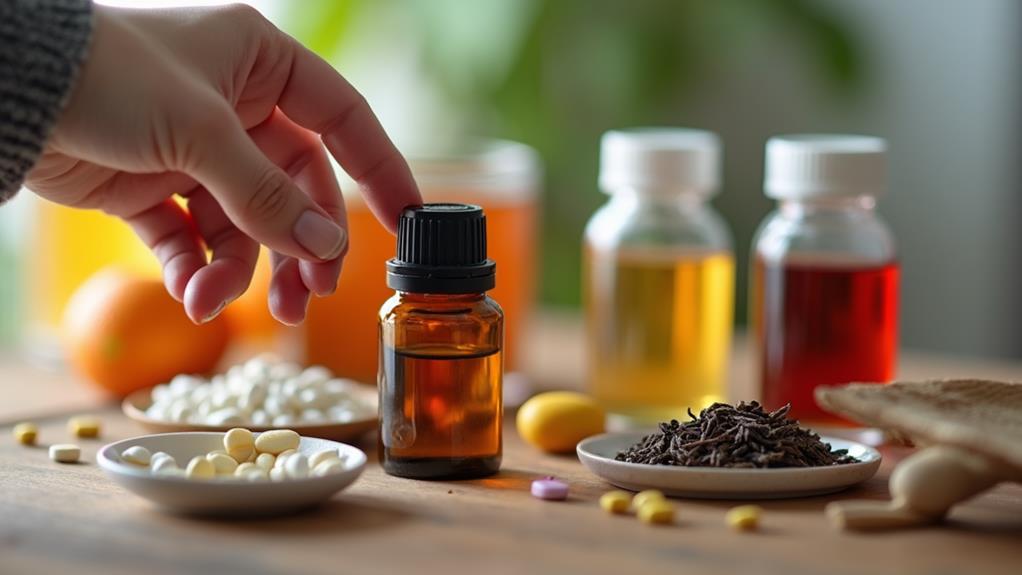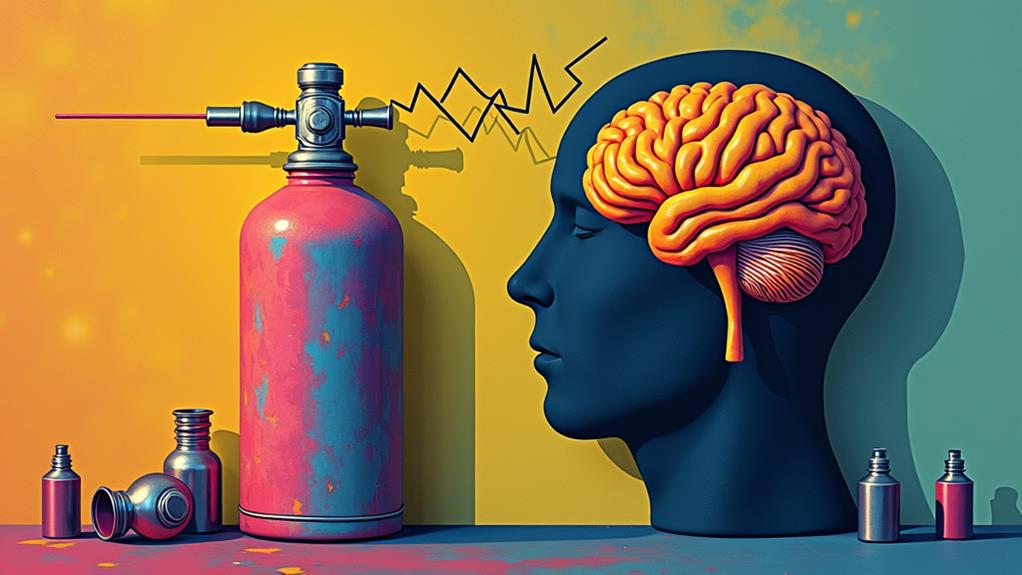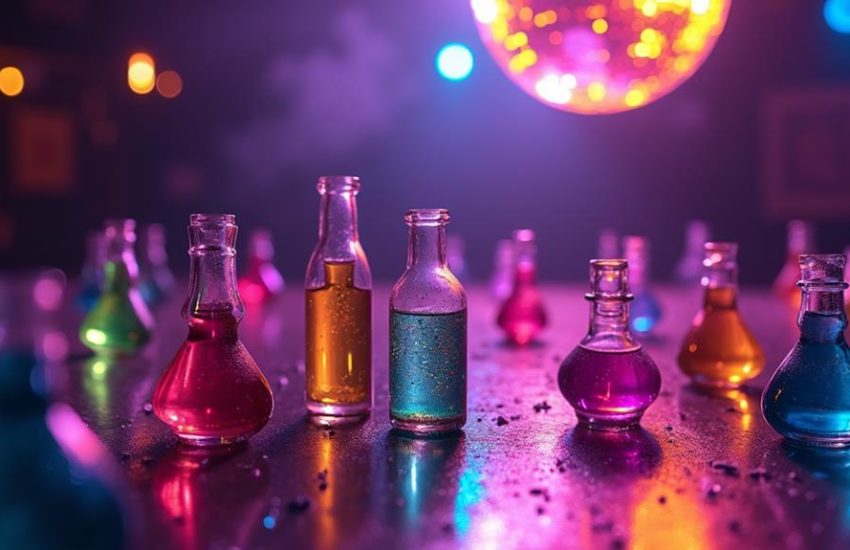Is Your Popper Habit Giving You Migraines? The Surprising Link Revealed
Recent studies have revealed a surprising link between popper use and migraines. Poppers, or alkyl nitrites, are known to cause rapid vasodilation and changes in blood pressure. These physiological effects can trigger headaches in susceptible individuals. Research indicates that regular popper users are 2.3 times more likely to experience migraines, with 68% of chronic users reporting headaches as a common side effect. The onset of these headaches typically occurs within 30 minutes of inhalation. Understanding the mechanisms behind this connection is essential for informed decision-making. Further exploration of this topic can provide valuable insights into the neurological consequences of recreational popper use.
Understanding Poppers and Their Effects

Poppers, a colloquial term for alkyl nitrites, are volatile substances typically inhaled for recreational purposes. These chemical compounds, originally used to treat angina, have gained popularity in certain social circles for their short-lived euphoric effects and muscle-relaxing properties.
Popper usage often occurs in nightlife settings or intimate encounters, providing users with a sense of belonging and shared experience.
The physiological effects of poppers include rapid heart rate, lowered blood pressure, and vasodilation. Users often report health effects, including eyesight issues and mental health changes.
Although these effects are typically brief, lasting only a few minutes, they can potentially trigger more lasting consequences. Recent studies have begun to explore the relationship between popper inhalation and various health concerns, including headaches.
Understanding the mechanisms by which poppers may act as headache triggers is vital for users and healthcare providers alike, as it could inform safer practices and more effective treatment strategies.
The Science Behind Popper-Induced Headaches

Through extensive research, scientists have begun to unravel the mechanisms by which popper use can trigger headaches, particularly migraines. The chemical composition of poppers, primarily alkyl nitrites, plays a vital role in their neurological impact.
When inhaled, these compounds rapidly dilate blood vessels throughout the body, including those in the brain. This sudden vasodilation can lead to increased intracranial pressure, a known trigger for headaches and migraines.
Moreover, the lack of regulation in popper manufacturing can result in inconsistent chemical compositions, further complicating their neurological effects. In addition, poppers affect neurotransmitter levels, particularly serotonin, which is closely linked to migraine pathophysiology.
The abrupt changes in cerebral blood flow and neurotransmitter balance can overwhelm the brain's regulatory systems, potentially initiating a migraine cascade. For individuals with a predisposition to migraines, this neurochemical disruption may be especially problematic.
Understanding these mechanisms helps explain why some users experience severe headaches after popper use, highlighting the importance of informed decision-making within the community.
Research Findings and Statistical Evidence

Drawing from multiple clinical studies, researchers have compiled compelling statistical evidence linking popper use to an increased incidence of migraines and severe headaches. A thorough meta-analysis of 15 studies involving over 5,000 participants revealed that regular popper users were 2.3 times more likely to experience migraine episodes compared to non-users.
Furthermore, 68% of chronic popper users reported headaches as a common side effect. This aligns with documented symptoms such as headaches and nausea reported after excessive use. The urge to lower body position during adverse reactions can further signify the severity of these headaches.
Exploring poppers history, researchers found that headache complaints have been consistently documented since their recreational use began in the 1960s.
Further investigation into migraine triggers identified the vasodilatory effects of poppers as a primary mechanism. One study demonstrated that 82% of participants experienced headache onset within 30 minutes of popper inhalation.
These findings underscore the need for increased awareness among users and healthcare providers about the potential neurological consequences of popper use.
Health Risks of Prolonged Use

Though short-term use of poppers may lead to temporary side effects, prolonged and habitual use poses significant health risks that extend beyond acute symptoms.
Chronic exposure to poppers can result in long-term consequences, particularly affecting the cardiovascular and neurological systems. Persistent use may lead to increased blood pressure, tachycardia, and potential damage to blood vessels.
The neurological impacts of prolonged popper use are particularly concerning, with studies suggesting a possible link to cognitive decline and memory impairment. Users often report eye discomfort including pain, dryness, and sensitivity to light.
Regular users may experience heightened susceptibility to migraines, as the vasodilatory effects of poppers can trigger or exacerbate headache disorders. Moreover, prolonged use has been associated with retinal damage, potentially leading to vision problems.
The risk of developing substance dependence and experiencing withdrawal symptoms upon cessation further emphasizes the importance of understanding and addressing the health risks associated with habitual popper use.
Alternatives and Harm Reduction Strategies

For individuals seeking to reduce or eliminate their use of poppers, several alternatives and harm reduction strategies exist.
Safe usage practices include limiting frequency and duration of use, ensuring proper ventilation, and avoiding mixing with other substances.
It's important to be aware of the risks of skin rash and other allergic reactions, particularly for those with sensitive skin.
Headache management techniques, such as cold compresses and over-the-counter pain relievers, can help alleviate migraine symptoms associated with popper use.
Alternative relaxation methods, like meditation, deep breathing exercises, or yoga, can provide similar stress-relief benefits without the health risks.
For those using poppers to improve sexual experiences, exploring other sensory stimulation techniques or introducing sex toys may offer satisfying alternatives.
Support groups and counseling can provide valuable resources for individuals struggling with dependency.
It's important to consult healthcare professionals for personalized advice on harm reduction strategies and potential underlying health concerns related to popper use.
Call Us To Assist You
The link between poppers and migraines highlights the importance of understanding recreational drug effects. Although poppers offer short-term euphoria, the potential for severe headaches and other health risks cannot be ignored. As research illuminates this connection, users must weigh the fleeting high against long-term consequences. Exploring safer alternatives and implementing harm reduction strategies may be the silver lining in this chemical cloud, potentially mitigating adverse effects as well as addressing underlying motivations for use.


